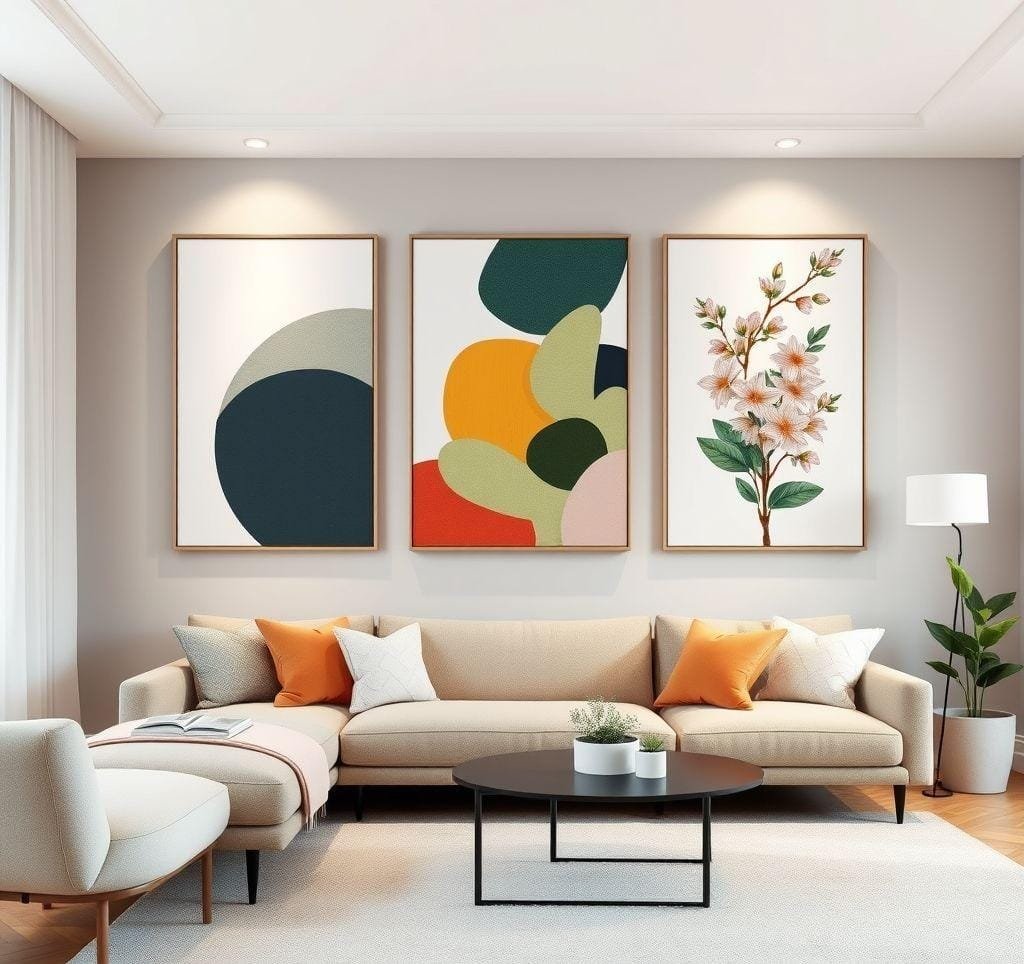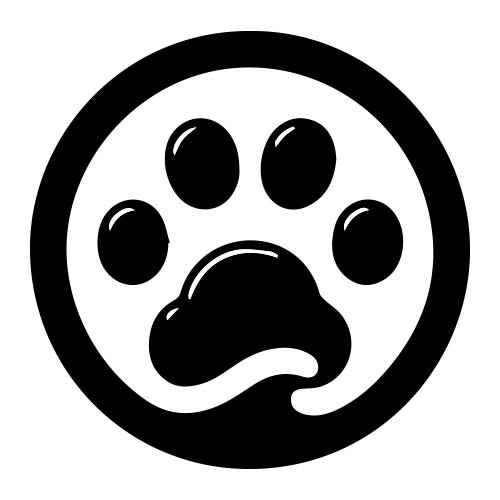Your cart is currently empty!
2025 Wall Art Trends Transforming Home Decor

As we get closer to 2025, the world of home decorating is changing in exciting ways, with wall art becoming the main star. Think of your walls as blank pages in a personal diary—they now show who you are, what you care about, and how you feel about the world. This year brings a mix of styles that fit different tastes while still being creative.
The importance of wall art in home design today is huge. Recent studies show that nearly 8 out of 10 homeowners see wall art as just as important as picking out furniture. This change means people want their homes to feel more personal and emotional, with visual pieces that tell their own special stories.
In this guide, we’ll look at the top wall art trends for 2025. These include the lasting popularity of simple designs, the emotional power of abstract art, and the natural beauty of plant prints. Each style has its own strengths and can be adjusted to make spaces that are not only nice to look at, but also show off individual personalities.
The Lasting Appeal of Simple Designs
Simple wall art remains popular in 2025, but it has grown from its plain beginnings to include warmth and texture. This year’s simple trend is about careful editing rather than just having empty space—it creates rooms that feel peaceful and purposefully put together. The modern simple style uses slight changes in texture, a few colors with sometimes bold accents, and artwork that stands out rather than blends in.
Experts say that after the pandemic, more people want calm, tidy spaces. About two-thirds of interior designers see more requests for these types of environments. As design expert Maria Thompson puts it:
“Simplicity in 2025 isn’t about having less—it’s about making space for what really counts. The art becomes the emotional heart of the room.”
Good simple wall art includes several important parts: clean lines that are easy on the eyes, one-color or limited color plans that create unity, and empty space that lets each piece stand out. Size matters a lot here—one large piece often works better than several small ones in simple settings.
Abstract Art Moving Forward
Abstract art is making a strong comeback in 2025, moving from special art galleries to regular homes. This trend shows that people are becoming more comfortable with uncertainty and want artwork that lets them find their own meaning and emotional connection. Modern abstract wall art ranges from bold, lively creations to soft, thoughtful pieces that add interesting visual elements.
The attraction of abstract art is its ability to stir feelings without showing real objects. Market research shows that abstract art sales for homes have grown by 40% since before the pandemic, meaning people are choosing decor that has more personal significance. Abstract pieces let homeowners show their uniqueness while creating focal points that start conversations in their living areas.
Current abstract trends include flowing shapes that look like natural patterns, geometric designs with careful arrangements, and mixed-material approaches that include texture and depth. Color choices go from calming neutrals to bright, emotion-filled combinations that can completely change a room’s mood.
As interior designer James Chen notes:
“Abstract art in 2025 works like emotional architecture—it affects how we feel in a space without telling us how to understand it. This open approach to beauty really connects with younger homeowners.”
Plant Prints Growing in Favor
Plant wall art has bloomed from a specialty interest to a major trend in 2025, powered by our renewed relationship with nature and eco-friendly living values. This style includes everything from scientific drawings to artistic versions of plants, bringing the peaceful, life-giving qualities of nature inside. The trend matches with larger movements toward nature-connected design, which understands our human need to link with natural elements.
The plant trend’s popularity is backed by strong numbers: online searches for “plant wall art” have grown by 150% in the last two years, and nearly two-thirds of younger adults now prefer nature-themed decor over other styles. This preference shows increasing environmental awareness and a wish to create safe spaces that offer breaks from our increasingly digital and city-centered lives.
Modern plant art has grown beyond traditional dried flower displays. Current versions include extra-large tropical leaf prints that make bold statements, delicate fern designs that add texture and flow, and scientific-looking drawings that mix learning value with visual appeal. The colors usually lean toward natural greens, earth tones, and sometimes bright flower accents.
Eco-friendly considerations are crucial in this category. Earth-conscious buyers increasingly look for artwork printed on recycled materials using green inks, and many prefer pieces that highlight local or threatened plant species. This values-based approach to decor selection shows an important change in how people connect with the art in their homes.
New Mixed Styles
Beyond these main trends, 2025 is seeing new mixed styles that combine elements from different traditions. These blended approaches show the increasingly varied nature of modern interior design, where homeowners feel free to mix styles rather than follow strict visual rules.
Simple-abstract mixes join clean design with emotional expression, creating pieces that feel both controlled and feeling-rich. Plant-simple combinations reduce natural elements to their basic forms, making simplified versions that keep a link to nature while accepting modern looks. Abstract-plant blends interpret plant shapes through non-realistic approaches, focusing on color, texture, and movement rather than exact representation.
These mixed styles appeal especially to younger people who value individuality and don’t like strict style boxes. They allow for personal expression while keeping design harmony, and they often work particularly well in open living areas where multiple visual elements need to work together.
The flexibility of these approaches makes them perfect for creating complex, polished interiors that change with shifting tastes and needs. They represent the future of wall art—pieces that serve multiple purposes, from visual improvement to emotional support to personal expression.
Technical Advances in Wall Art
The wall art scene in 2025 is being changed not just by style trends but by technology improvements that expand creative options and availability. Digital printing methods have reached new levels of quality, allowing for amazing detail, color precision, and material variety. These advances mean homeowners can get museum-quality copies and original artwork at more affordable prices.
Augmented reality tools now let buyers picture artwork in their spaces before buying, reducing the guesswork that usually came with art selection. Material innovations include earth-friendly bases made from recycled materials, sun-resistant inks that ensure lasting quality, and textured finishes that add touchable depth to flat pieces.
Customization has become more available, with many sellers offering personalized sizing, color changes, and even made-to-order compositions. This opening up of custom art shows a major shift in the industry, making unique, personally meaningful artwork available to more people.
These technical improvements add to rather than replace traditional artistic values. The best modern wall art joins technical quality with emotional depth, creating pieces that are both visually amazing and deeply significant.
Picking the Right Style for Your Space
Choosing wall art in 2025 requires thinking about several factors beyond personal preference. The desired mood of the space, existing color plans, lighting situations, and building features all affect which styles will work best. Simple pieces often do well in spaces meant for relaxation or focus, while abstract art can energize social areas or create striking focal points.
Size and placement considerations have become more advanced. The traditional “hang at eye level” advice has been replaced by more situational approaches that consider furniture layouts, sight lines, and architectural details. Larger spaces often benefit from standout pieces or carefully chosen groups, while smaller rooms might need more limited selections.
Lighting plays a key role in how artwork is seen. Natural light shows true colors and textures but changes during the day, while artificial lighting can be adjusted to emphasize specific aspects of a piece. Many homeowners now include special picture lighting in their design plans, understanding that proper lighting changes how art is experienced.
The most successful wall art choices in 2025 will be those that not only show personal style but also improve the function and mood of the space. This complete approach to art selection shows the growth of interior design as a field that balances looks, emotion, and practicality.
As we look ahead to the rest of 2025 and beyond, wall art keeps developing as a key part of home design. The trends toward simplicity, abstract expression, and plant themes reflect larger cultural moves toward awareness, individuality, and connection to nature. These styles offer different ways to personalize spaces and create environments that support well-being and self-expression.
The most successful interiors will probably include elements from multiple trends, creating layered, detailed spaces that grow with their owners. The availability of high-quality, reachable artwork means that making such environments is possible for more homeowners than ever before.
Ultimately, the best wall art choices are those that feel personally meaningful while improving the living experience. Whether through the peaceful clearness of simplicity, the emotional depth of abstraction, or the natural link of plant themes, the art we choose for our walls continues to shape not just how our spaces appear, but how we feel within them.
